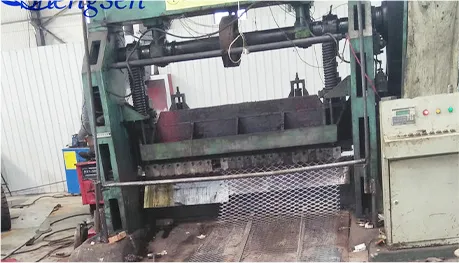-
 Phone:
Phone: -
 Email:
Email:

Rock Mesh Retaining Walls for Effective Slope Stabilization and Erosion Control Solutions
Rock Mesh Retaining Walls A Comprehensive Overview
Rock mesh retaining walls are innovative structures designed to provide stability to slopes and embankments while blending seamlessly with the natural landscape. These walls utilize a network of mesh systems that hold together rocks or boulders, forming a robust barrier against soil erosion and landslides. This article will explore the benefits, construction techniques, and applications of rock mesh retaining walls.
Understanding Rock Mesh Retaining Walls
Rock mesh retaining walls are constructed by filling wire mesh structures with stones, creating a flexible and resilient wall that can adapt to ground movements. The mesh is typically made from high-strength steel that is resistant to corrosion, ensuring durability. The design allows for a degree of movement, helping to absorb the forces exerted by earth pressures and environmental conditions.
Benefits of Rock Mesh Retaining Walls
1. Environmental Compatibility One of the primary advantages of rock mesh retaining walls is their ecological benefits. The natural appearance of stones reduces visual pollution compared to traditional concrete walls. Moreover, the gaps in the mesh allow vegetation to grow, promoting biodiversity and enhancing aesthetic appeal.
2. Cost-Effectiveness Traditional retaining walls often require substantial amounts of concrete and engineered materials. In contrast, rock mesh systems are often more affordable, as they utilize locally sourced stones and fewer manufactured materials. This can lower both material costs and transportation expenses.
3. Ease of Installation Rock mesh retaining walls are relatively simple to construct. The installation process involves placing the mesh, filling it with rocks, and securing it in place. This efficiency can significantly reduce labor costs and construction time.
4. Flexibility and Adaptability The flexible nature of rock mesh walls allows them to adjust to ground movements without cracking or collapsing. This characteristic is especially important in regions prone to seismic activity or soil shifts.
Construction Techniques
rock mesh retaining wall

The construction of rock mesh retaining walls typically follows several steps
1. Site Preparation The area is cleared and graded to create a stable base for the wall. Proper drainage and soil stability measures are essential to prevent future erosion.
2. Mesh Installation High-strength steel mesh is erected to the desired height and length. The mesh is often anchored to the base and secured against soil pressure.
3. Filling with Rocks Stones are then filled into the mesh structure, ensuring that they are tightly packed to provide optimal stability. The size and type of rocks can vary depending on aesthetic preferences and structural requirements.
4. Finishing Touches Once the mesh is filled, any exposed mesh can be trimmed, and soil or vegetation can be added around the base to promote natural growth, further enhancing the wall's integration into the landscape.
Applications
Rock mesh retaining walls are used in various applications, including
- Highway and Road Construction To stabilize slopes and prevent erosion, protecting infrastructure. - Landscaping Adding aesthetic value to gardens and parks by creating terraced levels. - Agricultural Projects Managing soil erosion and runoff in farming areas.
In conclusion, rock mesh retaining walls present an environmentally friendly, cost-effective, and adaptable solution for managing slopes and erosion. Their unique construction methodology empowers engineers and builders to create sustainable structures that align with the natural surroundings while providing critical support to challenging terrains. With their growing popularity, rock mesh retaining walls are poised to play an important role in future construction and landscape design projects.
-
Wire Mesh for Every Need: A Practical SolutionNewsJul.25,2025
-
Steel Fences: Durable, Secure, and Stylish OptionsNewsJul.25,2025
-
Roll Top Fencing: A Smart Solution for Safety and SecurityNewsJul.25,2025
-
Cattle Farm Fencing Solutions for Maximum SecurityNewsJul.25,2025
-
Affordable Iron Binding Wire SolutionsNewsJul.25,2025
-
Affordable Galvanized Wire SolutionsNewsJul.25,2025
-
Wire Hanger Recycling IdeasNewsJul.25,2025








